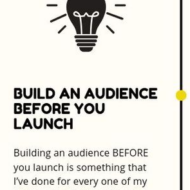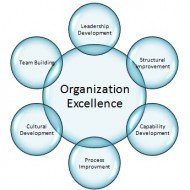Posted by Managementguru in Business Management, Entrepreneurship, How To, Marketing, Project Management, Startups
on Apr 24th, 2019 | 0 comments

Here’s to New Beginnings: Your Essential Guide to Starting a Small Business When you have a great business idea and strive to achieve financial independence, you might be thinking about launching a small business. Every huge corporation started with a small business, so why not? While you can definitely achieve success in the business world, keeping your small business successful for at least 2 to 5 years is a huge work. This game is worth the candle, though. So, if you’re trying to start a small business, here’s your handy guide to help you out: Start your journey with research Perhaps, you’ve already come up with a unique – or any – business idea, but is it going to bring you success? Does your business idea have many competitors? Before you take any step, do your own research. Consider running your idea through a simple validation process that will help you to figure out the future of that idea. First of all, your business idea should offer something – be it a service or a product – that the modern market needs these days. There are many ways to find out if a business idea will be successful, such as focus groups, deep research, and in most cases, trial and error. But before you go through trial and error ask yourself: Does the market need your product/service? Who are the people who will want to use your product/service? What are the companies that offer similar or the same product/service? Will you be able to compete with them? It’s important to ask confidently without any fear or disappointment. Create a business plan Any business idea requires a powerful business plan, which will become your guide during the process of establishment and business growth. There are many types of business plans, so choose the one that will suit your idea. If you’re looking for financial support from a financial institution or an investor, creating a basic business plan is essential. This business plan is usually thorough and long, and contains a set of sections that banks and investors check out when they’re validating a business idea. In case, you’re not looking for any financial support and you’re going to invest in your startup yourself, it may be enough to create a simple and short business plan just to give you the initial steps you should take. You can also come up with a working business plan on a piece of paper and change it as you start working on it. Consider your finances Generally, a startup doesn’t need too many investments, yet you’ll need some money to cover a number of expenses during the first months or even a year before your business will earn a profit. Calculate the one-time startup expenses like property leases, permits and licenses, legal fees, equipment, branding, insurance, inventory, market research, opening events, trademarking, etc. Then, calculate how much money you will need to keep your startup running for a year (your own paycheck, employee paychecks, utilities, rent, advertising, marketing, travel expenses, supplies, etc.) As soon as you find out an approximate amount of money, think about the ways to find them. You can either save money or borrow from family or friends. Many new entrepreneurs also apply for an SBA loan. Filling out an SBA personal financial statement may be tricky, but here’s a guide to help you out. Select a business structure Whether it is a limited liability company (LLC), a partnership, a sole proprietorship, or even a corporation, your next step is to select a business structure. Your business structure will affect a lot of factors, including your liability, business name,...

Posted by Managementguru in Organisational behaviour, Principles of Management
on Mar 1st, 2014 | 0 comments

Organisational development is not an overnight transformation; it is indeed a gradual process that has to be implemented systematically and in tandem with the external environment. Listed here are some of the relevant organizational development techiniques or interventions that help employees to become more productive. A. Sensitivity Training The notion is to change the attitude and behaviour of individuals involved in the group rather than the technical skill or knowledge. The term sensitivity refers to the psychological aspect of human mind that has to be shaped to act in accordance with the expectations of the group. One’s own weakness is exposed and members understand how others react towards them. Stress is on Group Dynamics and tackling inter-relationship problems. The idea is to improve the behaviour of people in order to maintain smooth inter-personal relationship without anybody’s power or influence. Members are encouraged to have an open, heart to heart talk to develop mature relationship. Employee Engagement & Retention The Process: Sensitivity group is a small discussion group without any leader. The trainer raises a question and allows the members to proceed with the discussion, the focus being feelings and mutual respect. There is no set task or agenda and members try to analyse the immediate problem by having open discussion instead of applying logic and rationale. Free and frank discussions lead the members through periods of shock, anger, frustration, hostility, all for the better understanding of one another. Improve People Management and Build Employee Engagement Feedback includes videotape of the proceedings and guidance from the trainers. Members unlearn old things through shock and change the present behaviour to improve their behaviour pattern. Individual emotions and inter-relationship pattern are primarily focused upon in sensitivity training. Sensitivity training borders on psychotherapy where the emotions as well as body language are taken into consideration. The expressions may be any one of the following: 1. Gestures 2. Screaming 3. Physical contact B. Survey Feedback Here the discrepancies among a group are weeded out using questionnaires, which identify the difference in perceptions amongst the same working family, group or department. The data collected is tabulated and distributed for taking part in the deliberations. This forms the basis for further discussions. Discrepancies if any can be sorted out by open discussions with all concerned, defending and opposing till a consensus is arrived at. Here the focus is on ideas and not on persons who put up those ideas. C. Process Consultation A firm may either seek the support of 1. Expert from within the organisation: Though he might be knowing the crux of the problem, his emotional involvement might block him from seeing the problem in the right perspective. Moreover the outcome of the result might be a ‘biased one’ due to internal politics. 2. An outside expert: This person with his vast knowledge, experience and similar problem encounters may have the know-how of resolving the problem but may lack the necessary insight of that particular problem. The organisation must see to that process consultation is done through an external expert with the needed support provided by the authorities from within the organisation. D. Team Building Team building is attempted at the group or inter-group level. The objective is to improve co-ordination thereby improving the performance as a group. 1. Goal setting 2. Development of inter-personal relations 3. Role analysis to identify roles and responsibilities 4. Team process analysis are the key features of team building. E. Inter Group Development One of the major challenges for firms involved in development is tackling inter departmental conflicts. Such dysfunctional conflicts may exist between a. Line and staff b. Production and materials c. Finance and production What is Group Dynamics? As sensitivity...




